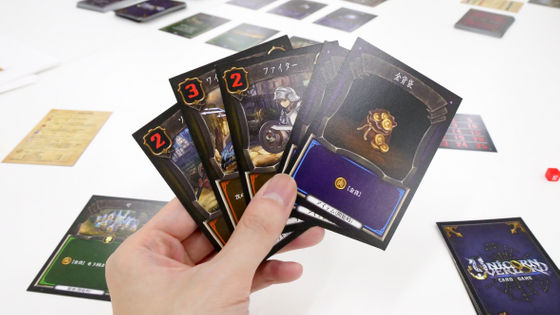Play review of the beautifully illustrated card game ``Cultus'', which aims to earn victory points by placing construction cards and building monuments, reading strategies together is the key to victory

Domina Games, which has released card games such as ``
Cultus - Domina Games
https://www.dominagames.com/cultus
·table of contents
◆1: Cultus package and contents introduction
◆2: Preparing for the game
◆3: Actual gameplay
◆4: Score calculation to determine victory or defeat
◆5: Summary
◆1: Cultus package and contents introduction
The Cultus package looks like this.

The number of players is 1 to 4 people, the approximate play time is 20 minutes to 120 minutes, and the target age is 12 years old or older.
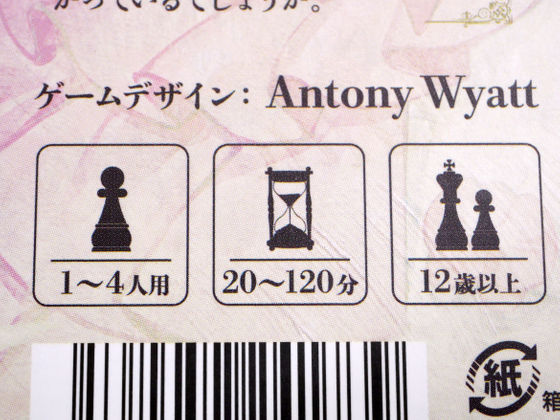
In addition to instructions, the box contained character cards, construction cards, monument cards, etc.

The game board is divided into two parts, and when playing, combine them with the included connecting parts to make one board.

There are 6 types of character cards.

Character cards have money counters, special effects, and flavor text written on them.

There are 12 types of monument cards in total.

Monument cards include additional income icons, special effects, and bonuses.

There are 48 construction cards in total, and each card has four squares marked on it.

There are seven types of icons on the construction card squares: ``church'', ``fortress'', ``palace'', ``house'', ``shop'', ``plaza'', and ``farmland''.

This is what the income card looks like. Each card has a bonus listed when you move your piece.

There are 6 types of planning cards in total.

By meeting the specified conditions, you can receive the victory point bonus needed to win the game.

A 'player pawn' that represents your piece.

A cube to indicate the location of monuments, etc.

A 'Victory Point Marker' that indicates the victory points you have earned.

The ``bonus medals'' that indicate income bonuses are solidly made and have a sense of weight. 'VP2' is written on the front and 'AP+1' is written on the back.

◆2: Preparing for the game
Let's start preparing for the game. First, place a victory point marker on the '0' square of the victory point board.
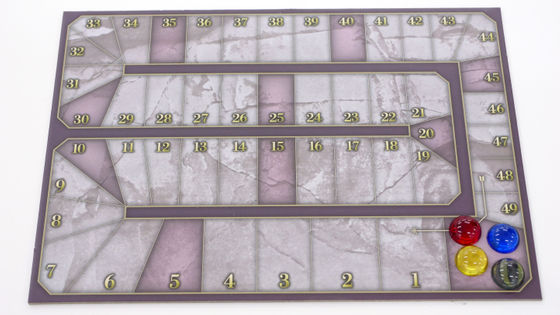
Each player is dealt 3 construction cards.
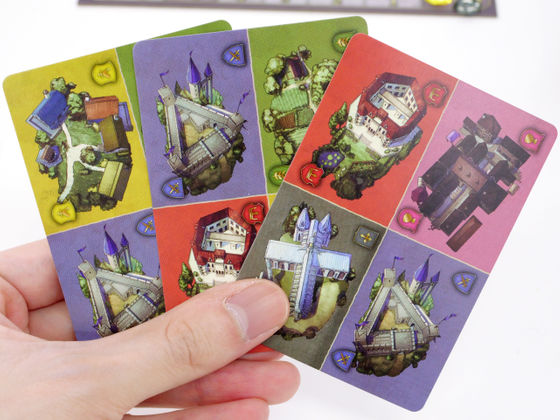
Divide the remaining construction cards into 6 piles of 6 each and place them on top of the income cards.
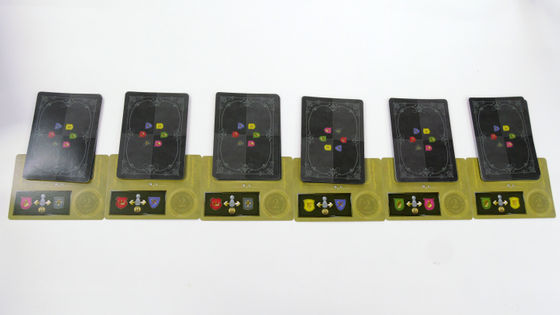
Deal one character card and one plan card to each player. Character cards are revealed to other players, and plan cards are visible only to you.
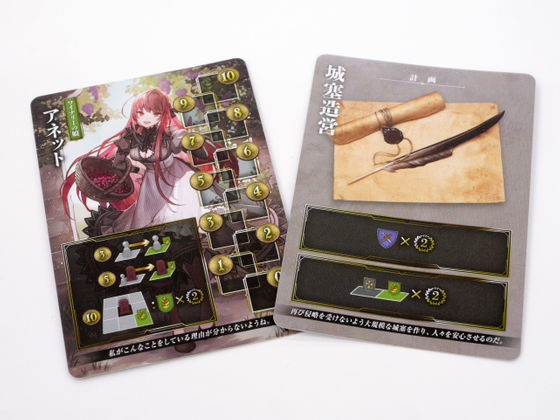
Place 4 cubes that match the player's color on the 'Stock' of the monument construction cost board, and place one of them on the '0' square.
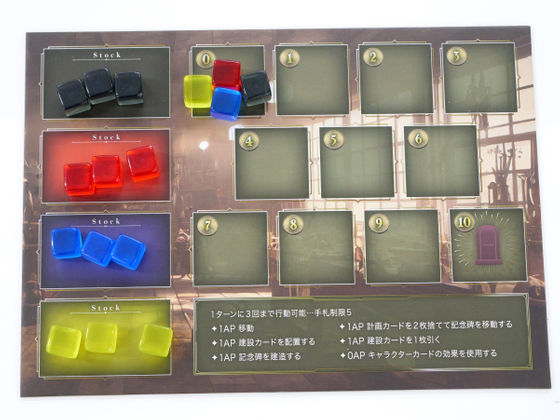
Then, move one of the three cubes placed in 'Stock' on the monument construction cost board to the '0' square of your character card.
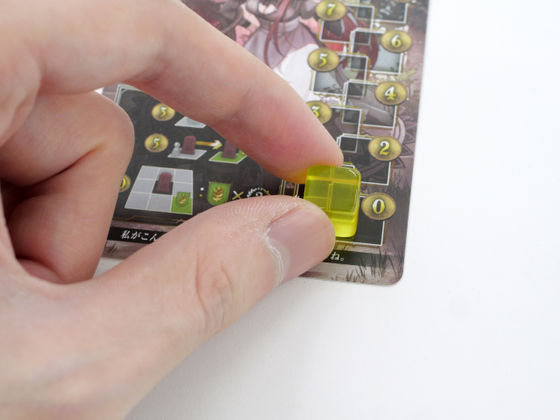
Shuffle the 12 monument cards and place 3 of them face up. Place the rest face down next to it.
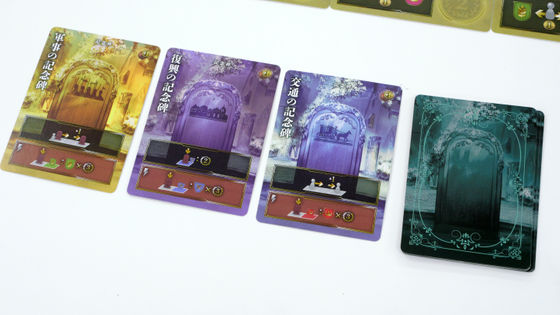
Each player places a bonus coin face up on any income card.
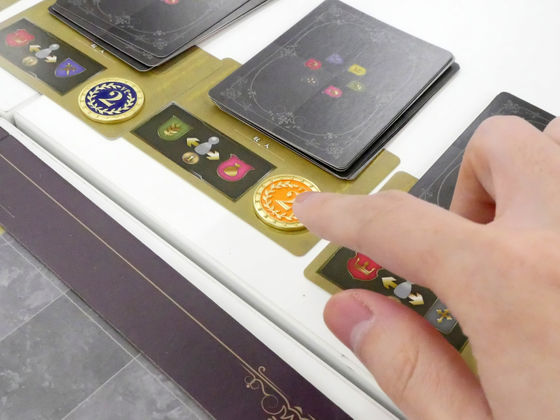
Each player chooses one construction card from their hand and places it in the designated position.
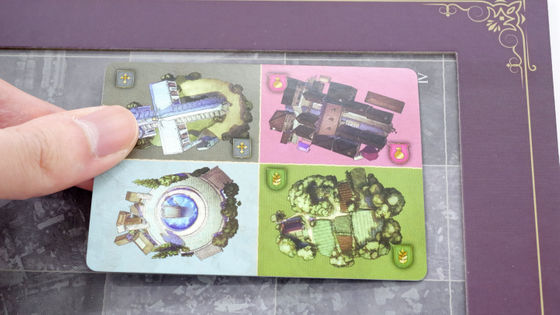
Then place your player pawn at the initial position.

The card arrangement in the case of 4-player play is like this. When setting up, place cards etc. referring to the included setup diagram.
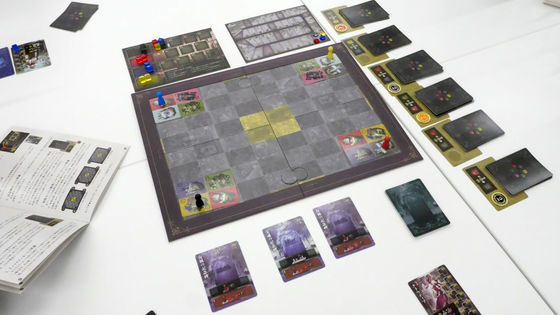
◆3: Actual gameplay
In 'Cultus', the aim is to change the shape of the city by using construction cards, and to earn victory points by taking advantage of the effects of characters and monuments. The game ends when ``the turn ends when there are no more construction cards in the deck'' or ``the round ends when there are no more monument cards'', and the player with the most victory points after the final score calculation wins. .
Let's start the game now. Each player advances through the ``Start Phase'', ``Income Phase'', ``Action Phase'', ``Hand Adjustment Phase'', and ``End Phase'' in order on their turn. In the 'starting phase', draw any one card from the top of the six construction card piles placed on top of the income card and add it to your hand.
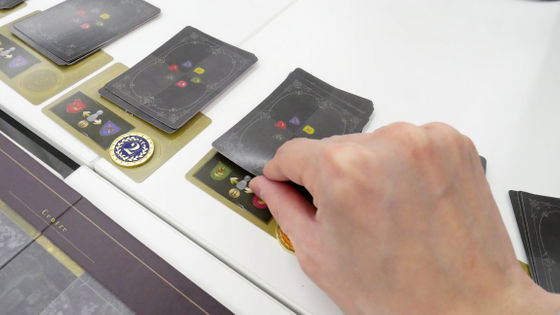
In the 'income phase' that follows, it is possible to earn 1 gold. When you earn income, you advance your cube on the monument building cost board or advance the cube on your character card.
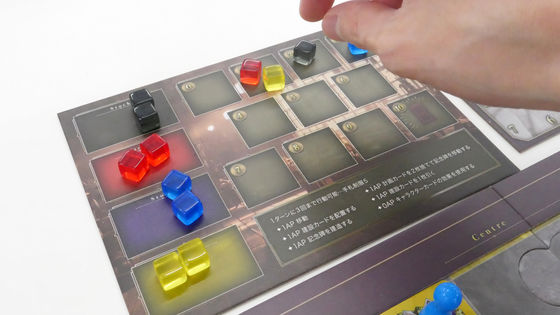
In the 'Action Phase', each player is given 3 AP, and 1 AP is used to 'move,' 'place construction cards,' 'build a monument,' 'discard two construction cards and move the monument,' and 'place construction cards.' Take one of the following actions: ``Draw 1 card.'' You can also select 'Use character card effect' without consuming AP.
This time, I first chose to 'draw one construction card' twice. This consumes 2 AP.
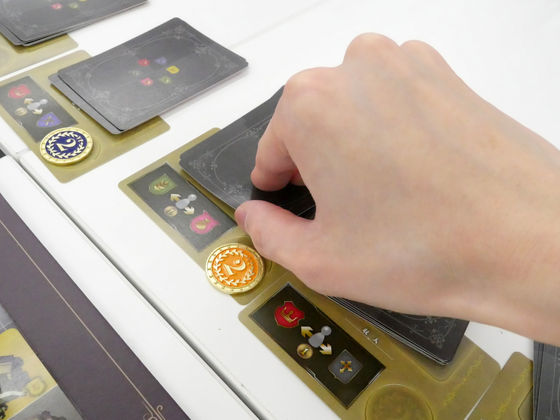
Select 'Place Construction Card' with the remaining 1 AP. Select a construction card from your hand and place it adjacent to your player pawn. There's nothing more you can do, so it's time for the next player to take their turn.
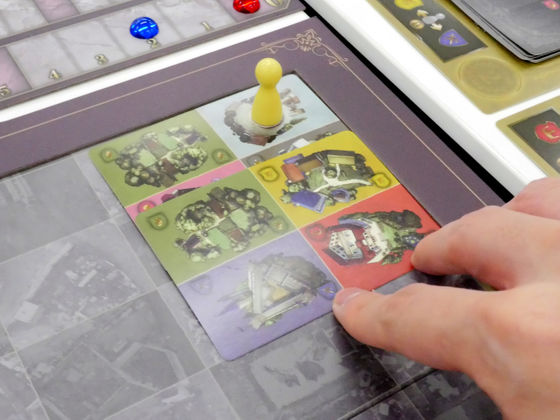
Movement is an important action as you progress through the game. 'Move' moves your player pawn to one adjacent square on the construction card, either up, down, left, or right.

Check the square you are moving from and the square you are moving to, and if these icons are the combination drawn on the income card, you will receive 1 gold as income. In this case, I moved from the 'Fortress' to the 'Palace', so I earned 1 gold according to the information on the income card. Also, if a bonus medal is placed on an income card, the player of that color will receive 2 victory points. This time the red player earned 2 victory points.

As the game progresses, the blue player's monument construction cost reaches 10 points.
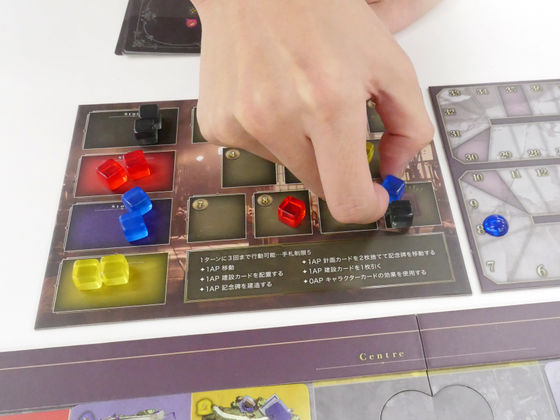
Therefore, place your own cube on the 'Piazza' square and build a monument.
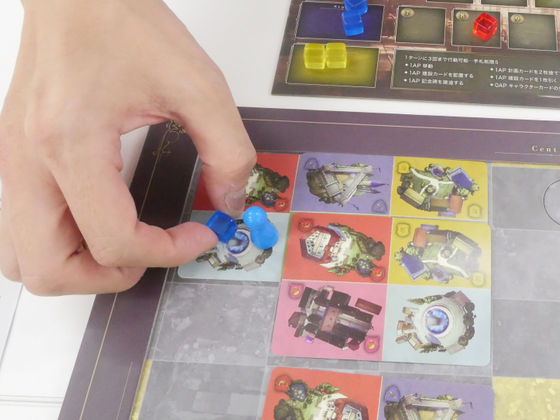
At that time, select one of the three monuments lined up and get it.
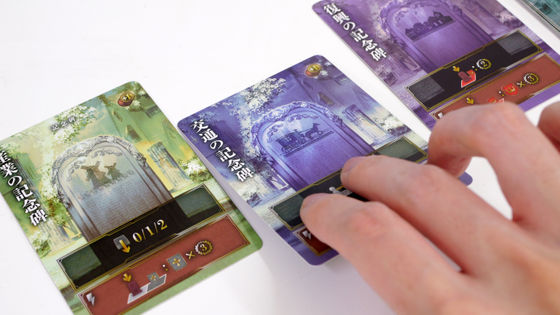
Each monument has its own unique effect, so building monuments early in the game can give you an advantage.
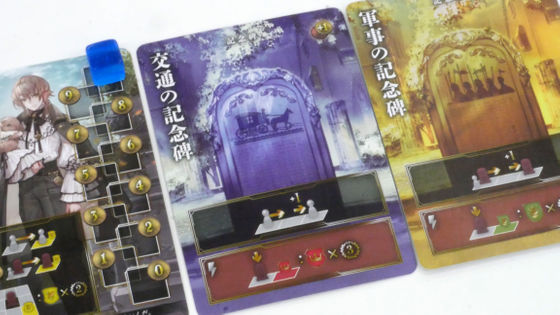
As the game progressed, one of the construction card decks was all drawn.
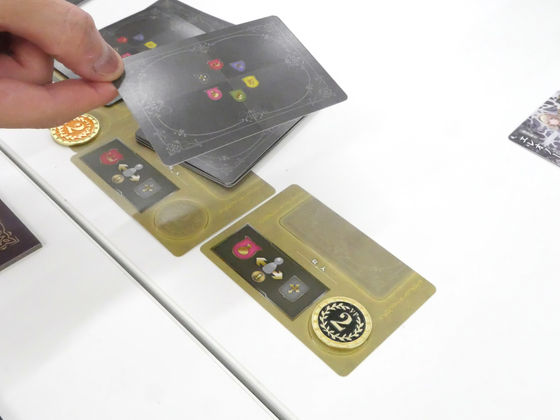
In such a case, turn over the income card. If a bonus medal was placed on the flipped income card, the bonus medal will be returned to the owner player. Players who receive bonus medals will receive an additional 1 AP per turn, and the number of actions they can take during the action phase will increase by 1.

Also, the income you can earn from moving increases by 1 gold for each income card you flip over. The more income cards are turned over, the more income you can get by moving, so if you actively draw cards from the deck, it will be easier to build monuments.
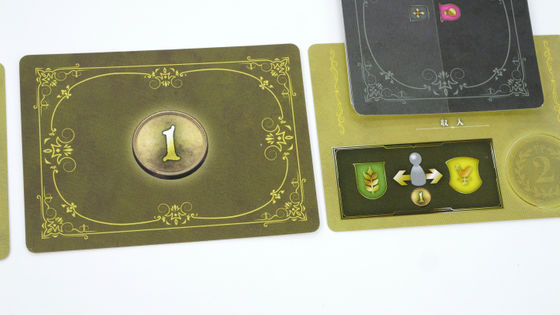
The collected income can be used not only to build monuments, but also to use the character's effects by consuming the funds on the character card.
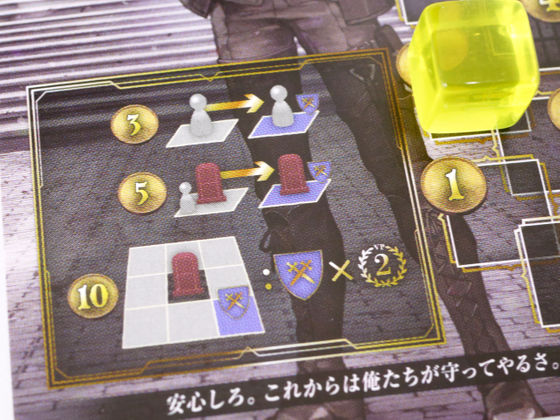
When the action phase ends, if you have 6 or more cards in your hand, you will conduct a 'hand adjustment phase' in which you discard cards until you have 5 cards in your hand. Managing the number of cards in your hand is important because not only will you lose 2 victory points for each card you discard, but if you don't have enough victory points, you will also lose the monument construction cost equal to the shortage.
◆4: Score calculation to determine victory or defeat
As the turn progressed, the entire deck of construction cards disappeared. Since the deck of construction cards is all gone, the game ends in the 'end phase' of that turn, and the score calculation begins.
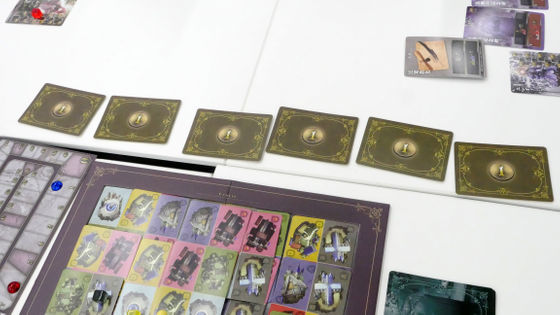
When the game ends, in addition to the victory points you have earned so far, you can earn victory points under various conditions. In the 'Central Area Bonus', players who build monuments in the center four squares of the game board will receive 10 victory points for each monument. This time, the red player is building a monument in the central area, so he gets 10 points.
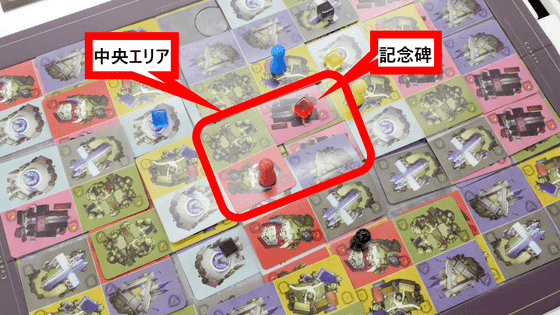
In the 'Plan Card Bonus', if you meet the conditions listed on your plan card, you will earn victory points accordingly.
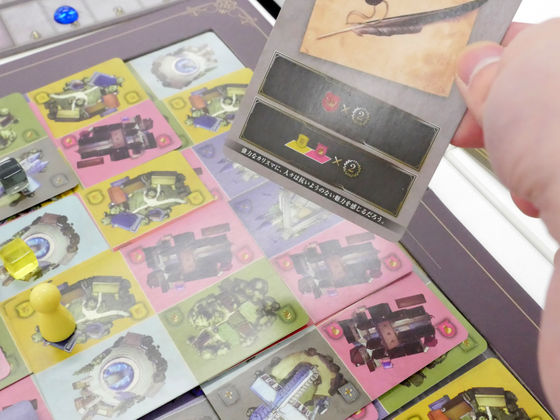
The score is calculated and the player with the most victory points is the winner. Including the effects of the 'Central Area Bonus' and plan cards, it is possible to quickly reverse a disadvantageous situation.
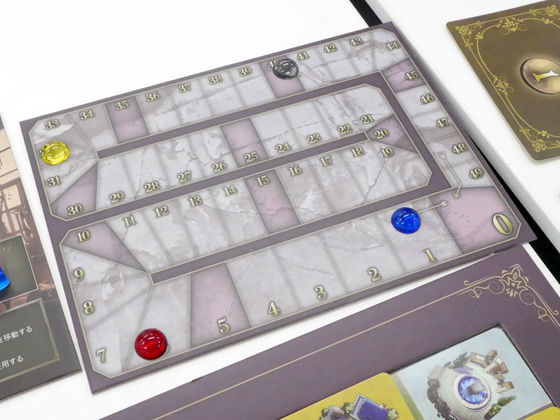
◆5: Summary
When I actually played 'Cultus', it took about an hour with 4 players. You can think about things like which construction card to place first, how to move to get more income, and what kind of strategy is needed to get the central area bonus. This card game has many points and can be enjoyed in a wide range of ways depending on the player's playing style.
An editorial staff member who has experience with multiple board games said, ``The connection between the character settings and worldview and the game itself is a bit weak, and I would like to see a little more character personality.'' ``There are a lot of rules and things to think about, such as the effects and usage of monuments.'' There were also comments such as, ``I think it might be difficult for people who are not familiar with board games,'' and ``I felt like there wasn't much use for the planning cards.'' Still, I felt that the game was highly replayable and strategic, as the development of the game changes greatly depending on how the building cards are drawn and placed.
Cultus also comes with cards for solo play, so you can play alone.
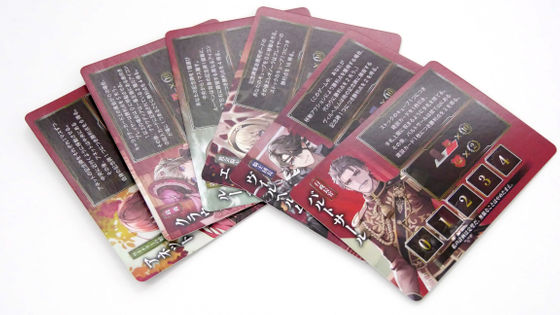
At the time of article creation, Cultus is currently accepting reservations at Amazon.co.jp, and the suggested retail price is 3850 yen including tax.
Amazon | Domina Games Cultus (1-4 players, 20-120 minutes, ages 12 and up) Board game | Board game | Toys
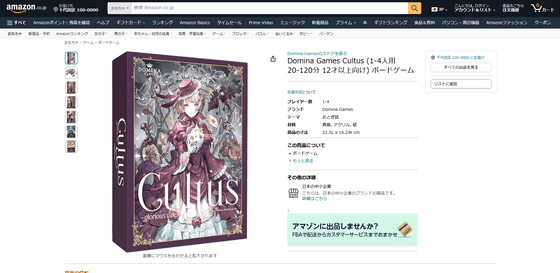
Cultus can also be obtained from the giveaway article below.
GIGAZINE Winter gift release project 'Please answer the questionnaire and bring them all!' - GIGAZINE

Related Posts:
